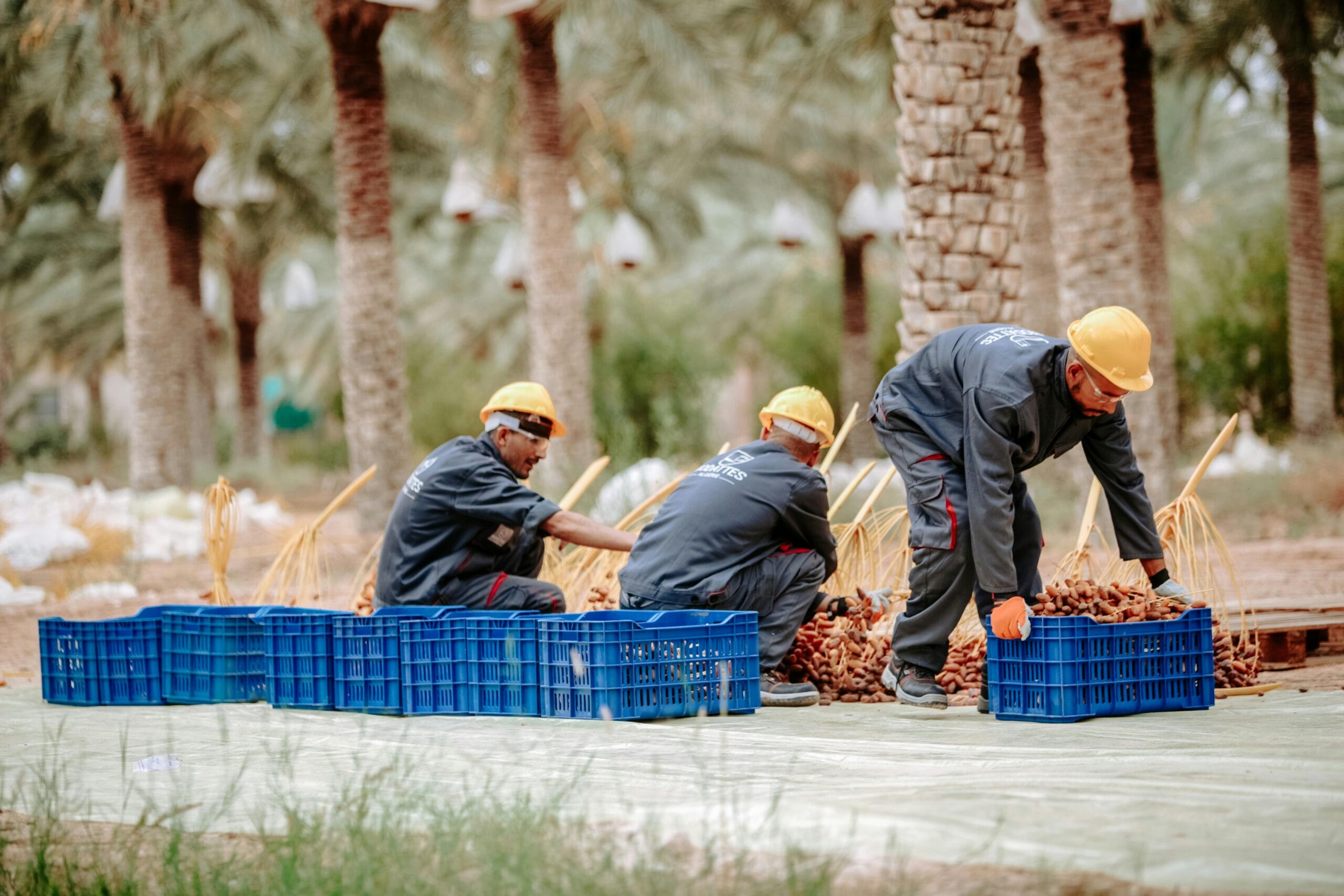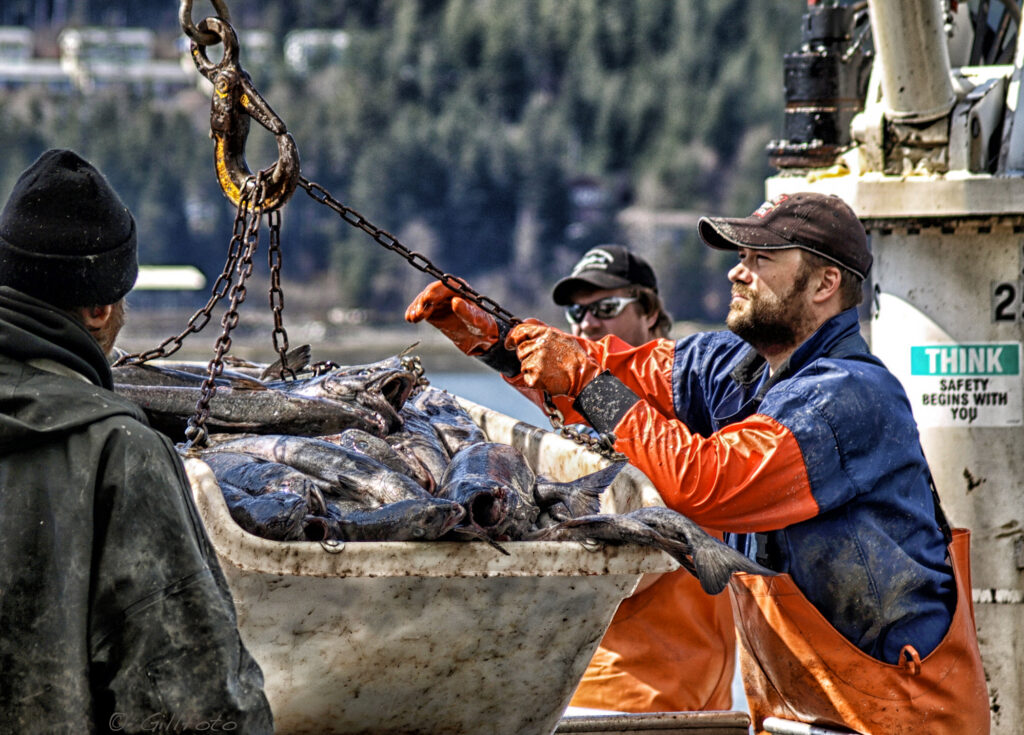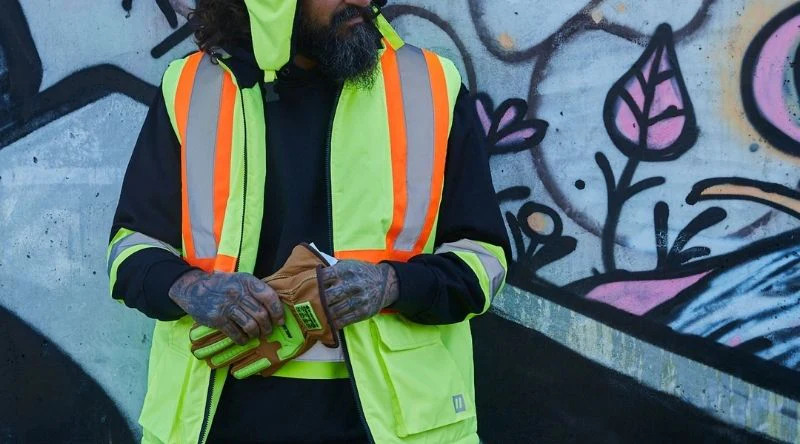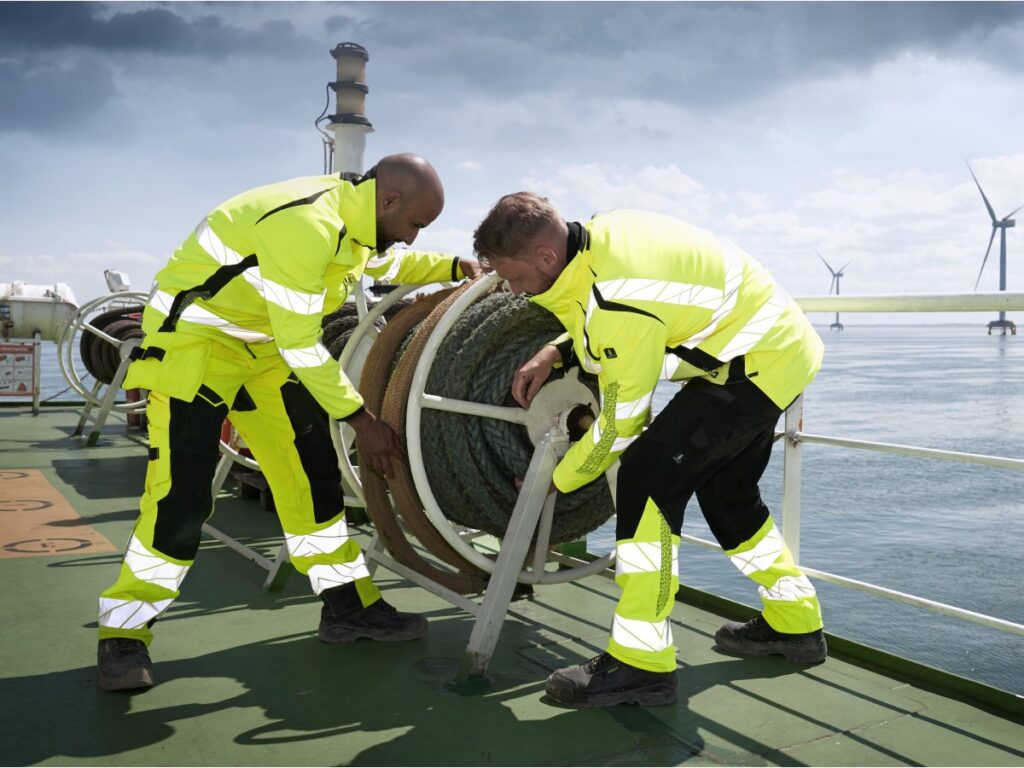
Agriculture in South America is one of the world’s largest and most labor-intensive industries, covering soybeans in Brazil, coffee in Colombia, grapes in Chile, sugarcane in Peru, and cattle ranching across Argentina. Workers spend long hours outdoors in high heat, humidity, rain, and pesticide-heavy environments, often using sharp tools and heavy machinery.
Without the right workwear, risks include heat stress, pesticide exposure, machete injuries, snake bites, and ergonomic strain. Choosing the correct PPE and workwear is not just about safety—it directly impacts productivity, compliance with export regulations, and long-term worker health.
South American agricultural workwear must be durable, breathable, and resistant to chemicals, UV radiation, and mechanical hazards. Key items include cotton-polyester coveralls, chemical-resistant gloves, wide-brim hats, steel-toe boots, and mosquito-proof clothing. Compliance with international standards such as EN ISO 27065 (protective clothing against pesticides) and local labor codes is essential for both worker safety and export market credibility.
Why Agriculture Requires Specialized Workwear in South America
- High Heat and UV Radiation → Field workers spend 8–12 hours under direct sun; clothing must reduce heat stress while protecting from sunburn and UV exposure.
- Chemical Exposure → Pesticide spraying, fertilizers, and herbicides require garments that resist liquid penetration and chemical degradation.
- Mechanical Hazards → Use of machetes, pruning shears, and tractors makes cut-resistant gloves, durable boots, and reinforced trousers essential.
- Biological Risks → Workers in banana plantations, sugarcane fields, and coffee farms are exposed to insects, snakes, and parasites.
- Regulatory Pressure → Exporters supplying Europe or the US must comply with stricter worker safety standards or risk losing contracts.
Real-World Accident Cases
Case #1 – Sugarcane Plantation, Brazil
Workers harvesting cane in heavy denim jeans collapsed due to heat stress. Thick fabric trapped sweat and restricted ventilation.
Solution: Replaced with lightweight cotton-polyester work trousers with ventilation panels, reducing heat-related incidents by 60%.Case #2 – Coffee Farm, Colombia
A worker applying pesticides wore a standard cotton shirt, which absorbed chemicals. Severe skin irritation and hospitalization followed.
Fix: Farm switched to EN ISO 27065-certified pesticide-resistant coveralls and nitrile gloves.Case #3 – Vineyard, Chile
Grapevine pruner suffered a deep hand laceration while using pruning shears without protective gloves.
Prevention: Introduction of cut-resistant gloves reduced injuries by 70% in one season.Case #4 – Cattle Ranch, Argentina
Ranch worker stepped on a snake while wearing thin rubber boots. Bite penetrated the boot.
Improvement: Distribution of thick leather safety boots with steel shanks significantly reduced snake bite incidents.
Workwear Standards Relevant to South American Agriculture
| Standard / Regulation | Purpose |
|---|---|
| EN ISO 27065 | Protective clothing against pesticide contamination |
| EN ISO 13688 | General performance requirements for protective clothing |
| EN ISO 20471 | High-visibility clothing for road and field workers |
| ANSI/ISEA 105 | Standards for cut-resistant gloves |
| Local Labor Codes (Brazil NR-31, Argentina LRT) | Regulations for agricultural worker health & safety |
🌎 Note: Export-oriented farms (e.g., supplying coffee or grapes to Europe) often adopt EU standards even if local rules are less strict—buyers demand compliance for credibility.
Key Workwear Items for Agriculture
| Item | Primary Purpose | Recommended Material |
|---|---|---|
| Lightweight Coveralls | Chemical protection during pesticide spraying | Cotton-polyester blend with chemical-resistant coating |
| Wide-Brim Hats / Caps | UV protection and cooling | Cotton twill with UPF rating |
| Chemical-Resistant Gloves | Protection from fertilizers & pesticides | Nitrile or neoprene |
| Cut-Resistant Gloves | Safety in pruning & harvesting | HPPE, Kevlar |
| Safety Boots (Steel-Toe, Snake-Resistant) | Protection from machinery, animals, and terrain | Leather with steel shank |
| High-Visibility Vests | Visibility near tractors & vehicles | Fluorescent polyester with reflective strips |
| Mosquito-Resistant Shirts | Prevent vector-borne diseases (malaria, dengue) | Polyester-cotton with insect-repellent treatment |
✅ Tip: Select modular sets (e.g., jacket + trousers) instead of one-piece suits for better ventilation in tropical climates.
Material Selection Tips
- Cotton-Polyester Blends → Breathable, durable, and quick-drying; best for tropical farming.
- Nitrile & Neoprene Gloves → Resist pesticides, fertilizers, and oils.
- Kevlar / HPPE → High cut resistance for machete-intensive crops like sugarcane.
- Leather Boots → Essential for cattle ranching and snake-prone areas.
- Polyester with Repellent Coating → Insect protection for banana and cocoa farms.
⚠️ Avoid 100% cotton garments in pesticide-heavy areas—they absorb liquids and retain harmful chemicals.
Layering Strategy for Tropical Agriculture
- Base Layer: Moisture-wicking T-shirt to keep skin dry.
- Mid Layer: Lightweight long-sleeve for UV and abrasion protection.
- Outer Layer: Pesticide-resistant coverall or high-visibility vest.
- Accessories: Hat with neck flap, safety glasses, gloves, and boots.
This modular approach helps balance heat management and safety.
Procurement Mistakes to Avoid
- Buying Non-Certified Pesticide Suits: Leads to compliance failure when exporting crops.
- Overlooking Breathability: Many farms buy PVC suits—cheap but unbearable in heat.
- Ignoring Local Climate Needs: Cold-resistant gear sold to tropical farmers sits unused.
- Mixing Non-Disposable and Disposable PPE: Reusing disposable masks or gloves risks contamination.
- Skipping Logo Customization: Missed branding opportunity for farms distributing uniforms.
Cost-Benefit Analysis
| Scenario | Without Proper Workwear | With Correct Workwear | Annual Savings |
|---|---|---|---|
| Heat stress hospitalizations (Brazil) | $500 per case × 40 workers | $12 per breathable shirt | $18,800 |
| Pesticide-related skin injuries (Colombia) | $6,000 per case | $25 per chemical-resistant coverall | $5,975 |
| Hand lacerations during pruning (Chile) | $300 per injury × 150 cases | $10 per cut-resistant glove | $44,000 |
| Snake bite treatments (Argentina ranches) | $2,500 per bite × 5 cases | $45 per snake-resistant boot | $12,275 |
👉 The ROI is clear: investing in the right workwear prevents accidents, reduces medical costs, and ensures compliance with export buyers’ standards.
Buyer FAQ
Q1: Can farm workers just use regular jeans and T-shirts?
A: Not advisable. Cotton jeans absorb chemicals, get heavy when wet, and increase heat stress risk. Certified agricultural workwear is safer and lasts longer.
Q2: Are pesticide-resistant coveralls reusable?
A: Yes, but they must be cleaned according to manufacturer guidelines. Some farms prefer disposable suits for high-exposure tasks.
Q3: Do farms really need snake-resistant boots?
A: Yes, especially in cattle ranching regions of Brazil and Argentina where snake incidents are common. Thick leather with steel shanks is highly recommended.
Q4: How often should gloves be replaced?
A: Chemical-resistant gloves should be changed after visible wear or every spraying season. Cut-resistant gloves last longer but should be inspected monthly.
Q5: Can we customize farm uniforms with company logos?
A: Absolutely. Branding improves worker identity and professional appearance, especially when buyers or auditors visit farms.
Procurement Checklist
- [ ] EN ISO 27065-certified pesticide suits
- [ ] Breathable cotton-polyester shirts and trousers
- [ ] Cut-resistant gloves for pruning and harvesting
- [ ] Snake-resistant leather boots with steel shank
- [ ] Wide-brim hats with UV protection
- [ ] High-visibility vests for machinery zones
- [ ] Mosquito-resistant long-sleeve shirts for tropical farms
- [ ] Company logo customization for uniforms
- [ ] Regular inspection and replacement schedule
Conclusion
South America’s agriculture depends on the resilience and safety of millions of workers. The right workwear doesn’t just reduce accidents—it protects health, boosts productivity, and ensures compliance with international buyers.
From breathable shirts in the sugarcane fields of Brazil to pesticide suits in Colombia’s coffee farms, every item plays a role in keeping workers safe while sustaining one of the world’s most important food baskets.
📩 Need certified agricultural workwear for your farm or distribution business?
Email: [email protected]
🌐 www.workwearsolutions.net
Zion Zhang
Recent Posts
 Workwear for Latin American Fishing & Ports: Waterproofing and Corrosion Resistance2025年9月12日Fishing and port industries in Latin America are the […]
Workwear for Latin American Fishing & Ports: Waterproofing and Corrosion Resistance2025年9月12日Fishing and port industries in Latin America are the […] High-Visibility Workwear in African Infrastructure Projects: Safety, Standards, and Sourcing Opportunities2025年9月12日From Nairobi’s highways to Lagos’s ports and Addis Ababa’s […]
High-Visibility Workwear in African Infrastructure Projects: Safety, Standards, and Sourcing Opportunities2025年9月12日From Nairobi’s highways to Lagos’s ports and Addis Ababa’s […] Flame-Resistant Workwear in the Middle East Oil & Gas Industry: Safety, Standards, and Sourcing2025年9月11日In the deserts of Saudi Arabia, the offshore rigs of Qatar, […]
Flame-Resistant Workwear in the Middle East Oil & Gas Industry: Safety, Standards, and Sourcing2025年9月11日In the deserts of Saudi Arabia, the offshore rigs of Qatar, […] Workwear in Africa’s Construction Boom: Demand, Trends, and Opportunities2025年9月11日Walk through any African city today, and you’ll see […]
Workwear in Africa’s Construction Boom: Demand, Trends, and Opportunities2025年9月11日Walk through any African city today, and you’ll see […] PPE Distributor Success Stories: From Small Orders to Large Contracts2025年8月20日I’ll never forget the story of a small distributor in […]
PPE Distributor Success Stories: From Small Orders to Large Contracts2025年8月20日I’ll never forget the story of a small distributor in […] How to Build a Strong PPE Sales Channel in Emerging Markets: A Buyer’s Guide2025年8月20日I was in a meeting with a distributor from Lagos, Nigeria, […]
How to Build a Strong PPE Sales Channel in Emerging Markets: A Buyer’s Guide2025年8月20日I was in a meeting with a distributor from Lagos, Nigeria, […]
CONTACT US
- Feel free to contact us any time. We will get back to you as soon as we can!
- +86-17330061805
